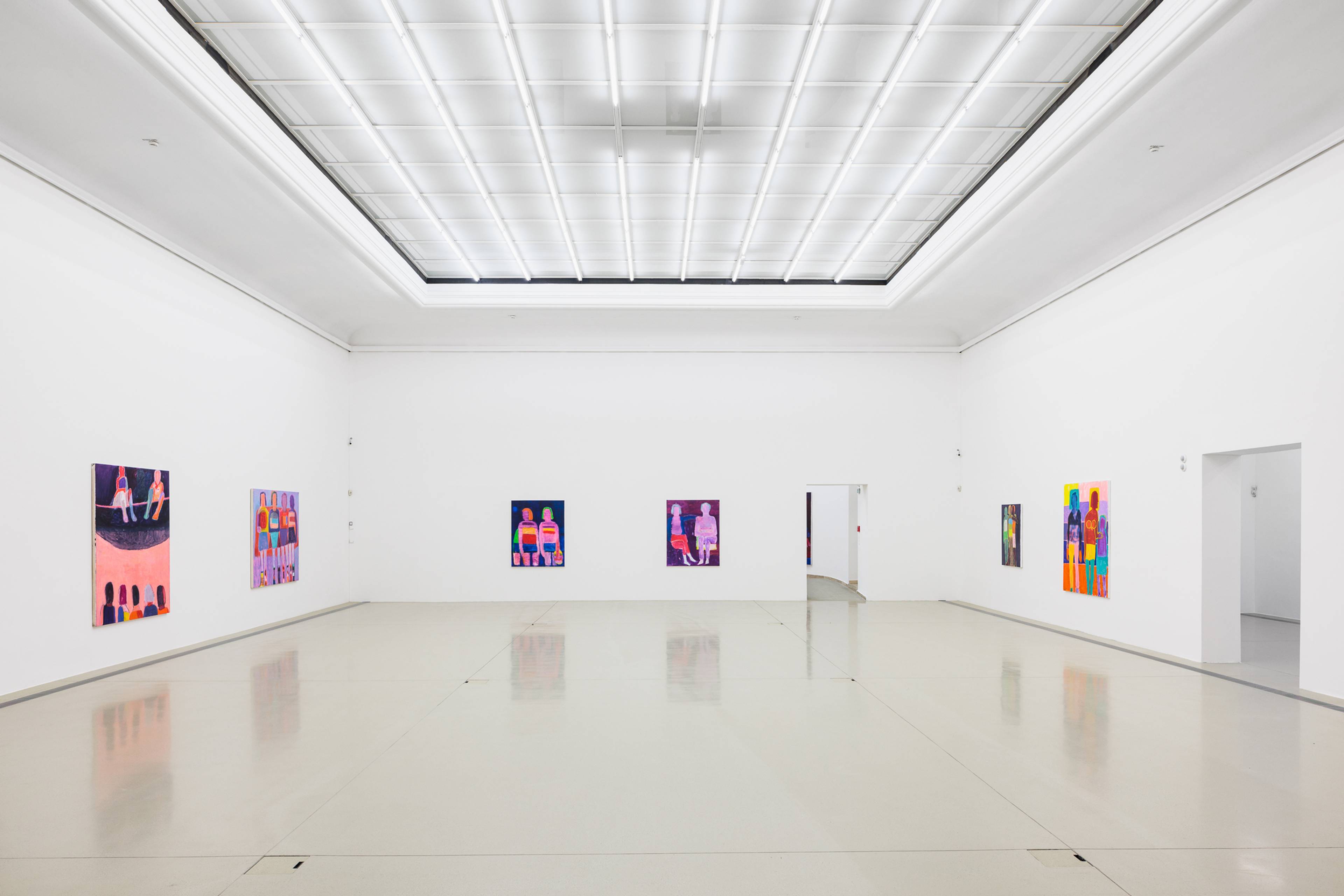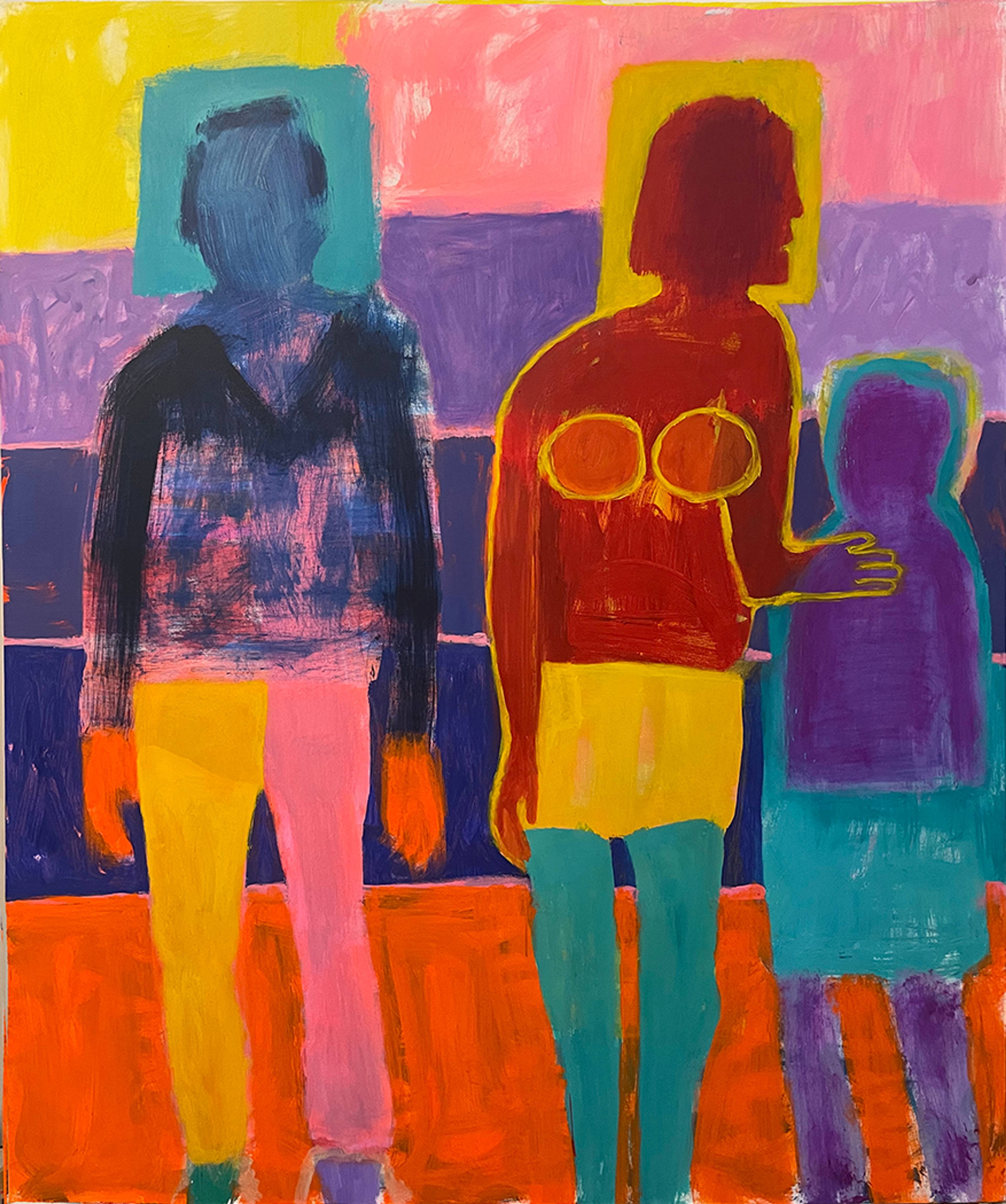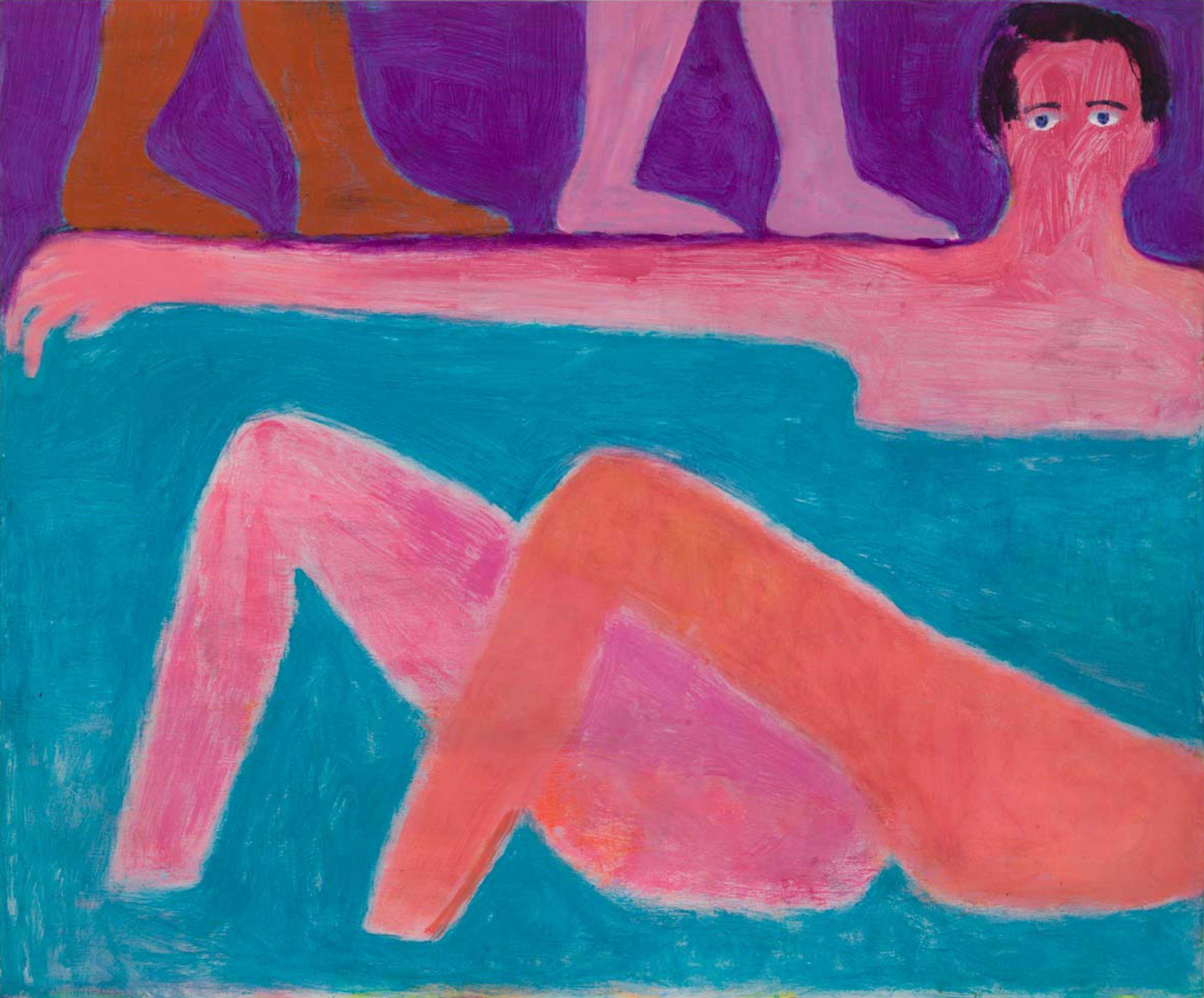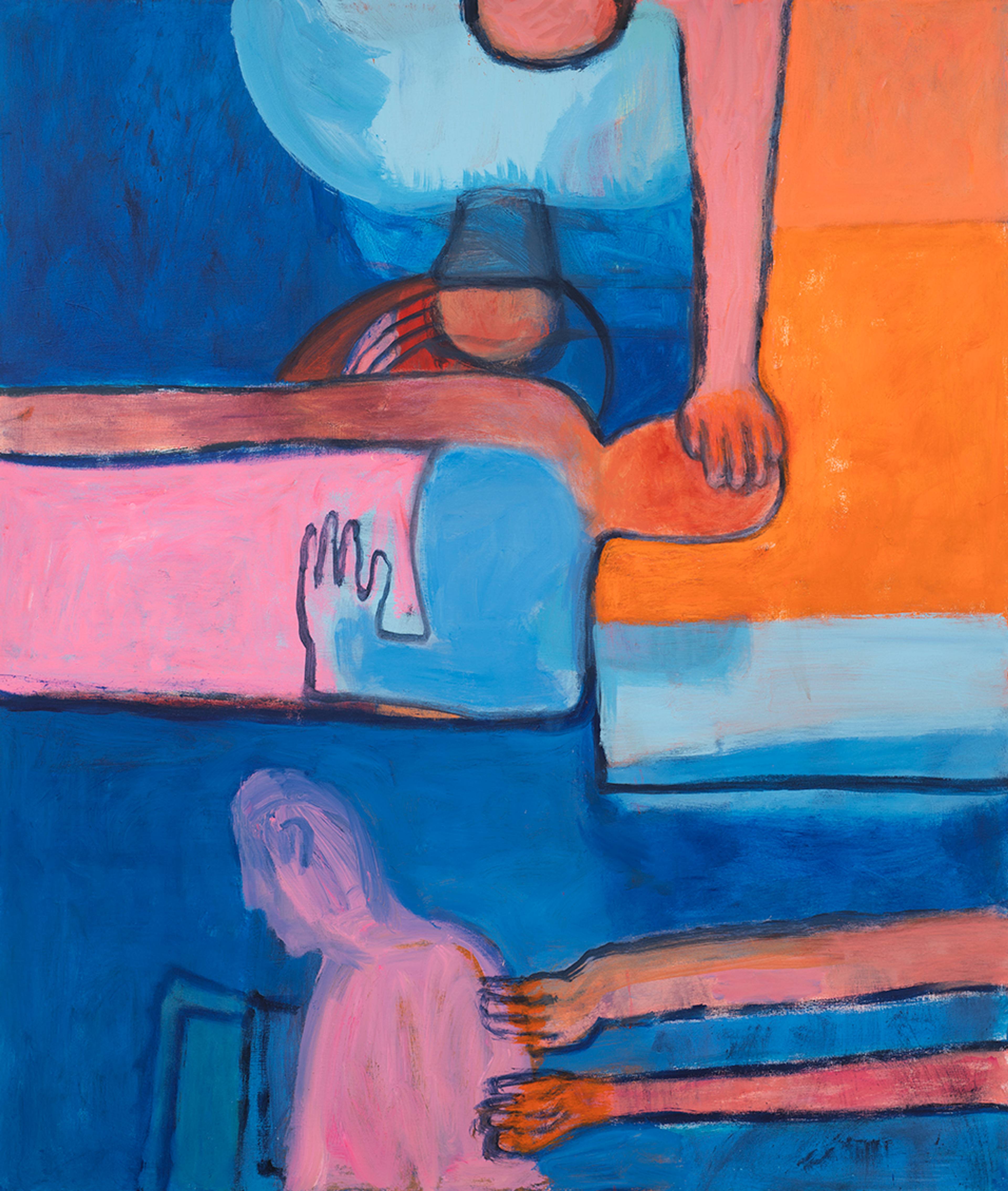The exhibition, curated by director Sandro Droschl, is one of the largest solo presentations to date of the eighty-two-year-old painter Katherine Bradford (*1942) outside the US. The show, which spans both floors of one of Austria’s oldest white cubes, is well-suited to getting to know, inspecting, and, above all, enjoying the latest decade of her œuvre. The discursive and pictorial questions that always accompany painting – about the contradictory relationship between figuration and abstraction, the boundaries between the portrayed bodies and their pictorial backgrounds, and the paradigm of embodiment ascribed to painting – permeate canvases large and small in “American Odyssey.”
View of “American Odyssey,” HALLE FÜR KUNST Steiermark, Graz, 2024. Courtesy: HALLE FÜR KUNST Steiermark, Graz
The figures in the main exhibition space emanate rather indefinitely from Bradford’s bright color fields, all brought to the canvas without the aid of sketches. Ever in their canvases centers, they are presented in outward calm, but exposed to tense, scenic situations of lack, vulnerability, or hard-to-fathom stoicism, the resolutions of their narratives apparently tricky or withheld outright. In Water Lady (2018), a floating jug slides over the shoulder and into a glass held in the figure’s hand, but the eyes, nose, and mouth of the schematic face can only be recognized in a rough smear, so that it seems impossible their thirst could actually be quenched. Or, in View from Below (2020), two actresses sit on a net looking downwards, serene in the knowledge that nothing will happen without them that is worthy of their audience’s expectant attention. Where Bradford’s diagrammatically colorful and often faceless acrylics leave narrative gaps, their legible gestures and postures might tempt the viewer to attribute dialogues to the figures, almost audible in the facial expressions of Friends Together (2021) and Bus Stop (2021). The latter work is an exhibition highlight, for its tangible transformation of a very everyday situation into a transcendental one. Once a facial feature is realized, such as the eyes of the Man in Tub with Legs (2018), an entire painting can be held together by a single gaze.
Bus Stop, 2021, acrylic on canvas, 182.9 x 152.4 cm
Mme Matisse, 2018, acrylic on canvas, 203.2 x 172.7 cm
Water figures prominently in a quartet of paintings in the Halle’s apse, their protagonists stepping hesitantly into water (By The Lighthouse, 2024), standing in low water (Friends Standing in Low Water, 2024), partly submerged in water (Under Water, 2023), or, in the case of a naked couple holding a body wrapped in clothes, perhaps mourning in water (Carry Painting, Mother, 2023). Its material analogies to color are taken to a painterly extreme in an adjoining room, where the question of whether a given figure is surfacing, sinking, or swimming depends, in three distinct pictures, on how far outside or how deep within a dark azure the viewer positions the pale bodies. The hairstyle and outstretched arms of Figure Walking Out to Sea (2024) could, with a little help from the imagination, be reminiscent of the self-portraits of “Das Floß der Medusa” (The Raft of Medusa, 1996), a series of paintings, drawings, and lithographs made by Martin Kippenberger near Steiermark a year before his death. Bradford’s Mme Matisse (2018) is a clearer art-historical reference, showing the title character from the waist up between two officer figures, one shown in profile and the other square on, their bright-buttoned uniforms of one hue with the red background. Most empathetic, perhaps, are the layings on of hands in Fever (2021), one palm against an ember-y forehead, two more stretching toward a peach-pink back, the perspective ravaged perhaps by the temporal suspensions and compressions of the Covid pandemic.
Man in Tub with Legs, 2018, acrylic on canvas, 152.4 x 182.9 cm
Fever, 2021, acrylic on canvas, 203.2 x 147.3 cm
Sideway Swimmers, 2019, acrylic on canvas, 172.7 x 203.2 cm
In the darkened basement, smaller, darker pictorial inventions hint at feelings of existential pensiveness, interspersed with little flashes of painterly peculiarity. Another couple wades in water, this time their hands aglow in Holding Spheres of Light (2023), while in Pink Studio (2023), the artist herself tackles three color fields simultaneously, half-naked and surrounded by ten open pots of paint on the floor (a color field in itself). And should the visual opulence – its tricks, effects, and colorful changes within the painterly layers and perspectives – begin to lose its sheen? Don’t miss the excellent Pop Corn (2023), snapshotting a first date at its most cinematically awkward, the moment when one nervous hand goes reaching into the bucket and – surprise! – finds another nervous hand, sending the popcorn spilling like a volcanic eruption.
___
“American Odyssey”
HALLE FÜR KUNST Steiermark, Graz
16 Mar – 19 May 2024








